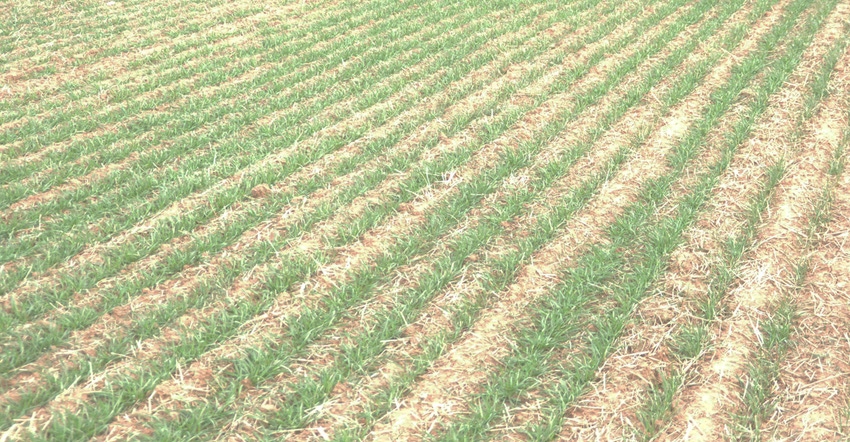October 8, 2020

With a big cooldown in temperature and no rain in the forecast, wheat planting is off to the races. Over the past 20 years, about half of the Kansas wheat crop is planted before Oct. 4, according to historical data from the USDA's National Agricultural Statistics Service.
Farmers planting wheat after that date can still maximize yield potential, however, by increasing seeding rates and applying in-row phosphorus.
"If we consider what makes an optimal planting date, we think of how the planting date is going to affect the environment in which the crop is going to be exposed," said Romulo Lollato, wheat production specialist with K-State Research and Extension. "If you plant too early or too late, we put those critical development phases of the crop into different environmental conditions."
Lollato and the team at K-State looked at about 20 years of variety trial data across Kansas and neighboring states to identify the perfect time periods to plant wheat.
Depending on the geographic location, the optimum window for sowing wheat can range from Sept. 10 to 30 in the northwest and Oct. 5 to 20 in the southwest. This gradient in sowing dates is a function of temperature, with higher elevations in the northwest seeing cooler air and soil temperatures earlier in the year.
Planting later than these optimum windows puts the wheat crop at a disadvantage from the very start. Colder temperatures in October and November do not provide the plant enough time to establish a good stand. Specifically, later planting dates negatively affect the number of tillers the wheat crop can put out in the fall and the yield potential for those tillers.

BEST DATES: This map from Kansas State University shows the optimum wheat planting dates by zones across the state.

"If we plant too late, we're going to delay every developmental stage of that crop, including grain fill, into later in the year, pushing into hotter temperatures," Lollato said. "Those hot temperatures can really decrease our grain yield."
For every day in planting delays past early October, Lollato reported a penalty of 3 to 4 bushels of lost yield potential in northwest Kansas. Southwest Kansas had a lower penalty, but still can see 1 to 2 bushels lost per day.
All is not lost if farmers still have wheat to plant after the optimal window. By increasing seeding rates and applying phosphorus, producers can support the establishment of the good stand needed to maximize yield potential come next summer.
"If we are planting late, we are giving the crop less time to tiller during the fall, so the yield of that crop is going to depend more on those primary tillers," Lollato said. "So, we need more of those plants out there to ensure good yield potential."
Lollato recommends producers bump up seeding rates by 10% for every week that wheat planting is delayed. Putting down phosphorus fertilizer in-row also will help boost tillering.
"Giving the crop greater chances to put enough tillers out there is usually money in the bank," Lollato said. "If you are delaying planting, that extra phosphorus is going to help that plant get off to a good start."
Source: Kansas Wheat, which is solely responsible for the information provided and is wholly owned by the source. Informa Business Media and all its subsidiaries are not responsible for any of the content contained in this information asset.
You May Also Like




